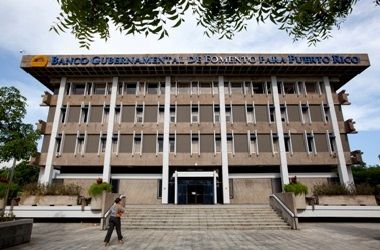(Reuters) - Puerto Rico asked its creditors to take a huge haircut that would slash its debt by about US$23bn in the opening salvo to resolve a crippling debt crisis, but the proposal was slammed by a bond insurer and described by a creditor as a “trial balloon.”
With a 45% poverty rate and a steady exodus of its population to the United States, Puerto Rico is trying to crawl out of an economic swamp before substantial debt payments come due in May and July. The US territory has defaulted on some debt and is trying to persuade creditors to take concessions.
The new plan announced on Monday would reduce a US$49.2bn chunk of debt by about 46%, to US$26.5bn, by offering creditors payout reductions under a new, so-called “base bond” with better legal protections. The cut to creditors was earlier reported by Reuters. The island has about US$70bn in total debt.
Creditors could have an opportunity to make up the difference in face amount through a US$22.7bn “growth bond,” whose payout would be dependent on future expansion, but there was skepticism about its prospects.
“We do not view this proposal as a serious effort,” said Nader Tavakoli, president and chief executive officer of bond insurer Ambac, which insured US$2.2bn net par, or original face value, of Puerto Rico bonds as of the end of November. Ambac recently sued the US territory over a recent debt default.
Daniel Hanson, an analyst at Height Securities, said in a research note that while in theory investors could recover par on their bonds “if the plan works out under the rosiest of assumptions,” in practice the payouts from the growth bonds would be extraordinarily low, noting that “growth bonds are a joke.”
Under the proposal made public on Monday, different creditor groups would be treated differently, based on seniority.
Holders of general obligation (GO) debt backed by Puerto Rico’s constitution would take a roughly 28% cut under the base bond, while holders of debt issued by the island’s income tax authority, COFINA, would take losses of about 51%, according to the plan. The haircut to all other holders would average about 61%.
“This is a trial balloon,” said Dan Fuss, vice chairman of Loomis Sayles, which holds GO bonds. “It’s an opening in the overall discussion.”
Fuss said in an interview the plan “is not going to fly” for GO bonds unless they are offered a higher coupon.
Issuers that would be included in the exchange are: the commonwealth and the Government Development Bank; Puerto Rico’s Public Buildings Authority PBA; sales tax bonds COFINA; its highway authority HTA; infrastructure financing authority PRIFA, its industrial development company PRIDCO, the employee retirement system ERS, its university UPR, convention center CCDA and public finance bonds PFC, which defaulted in August.
Interest payment on the base bond would begin in 2018, reaching 5% a year by 2021, while payouts on the growth bond would begin 10 years after the close of the offer.
The base bond is guaranteed, and reflects cuts in repayment while the growth bond is designed to make up the difference, but is only paid if the island’s economy grows.
Puerto Rico warned “time is of the essence” and if a deal is not reached by May 1, when a debt payment is due, the government may be “forced to declare a moratorium.”
Creditors are skeptical that Puerto Rico has done enough to rein in spending and right-size its government.
The exchange offer would provide creditors increased legal protections, including a guarantee on the debt via liens on income tax receipts, the island’s sales and use tax, and as much as US$325m in petroleum products tax revenues.
“This proposal is a reflection of our commitment to work with our creditors on a sustainable solution that does not place the burden on one stakeholder group alone,” Victor Suarez, the island’s secretary of state, said in a statement.
Shares of bond insurers MBIA, Assured Guaranty and Ambacfell. They all have exposure to Puerto Rico bonds.
Reporting by Nick Brown and Megan Davies
